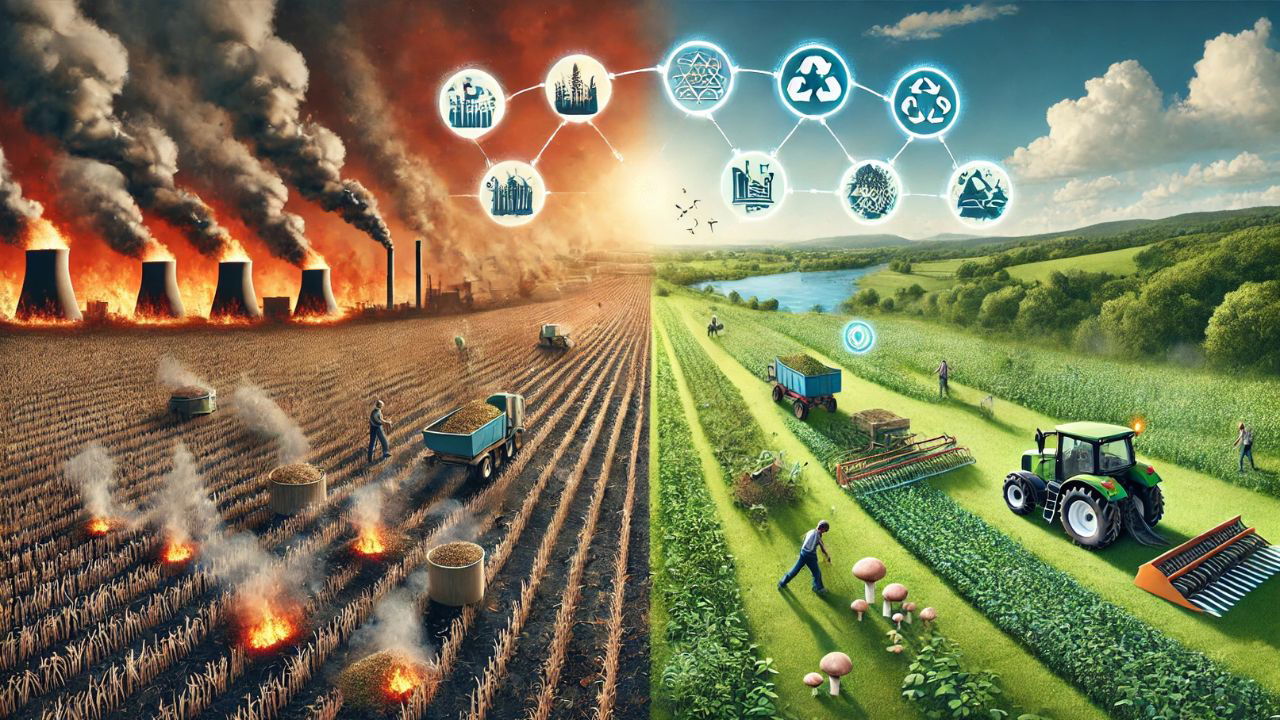
India generates millions of tons of straw post-harvest, a significant portion of which is commonly burned. This practice not only contributes to severe air pollution but also leads to the degradation of soil health, negatively impacting agricultural productivity. However, this stubble, often viewed as waste, holds the potential to be transformed into a valuable resource that can unlock immense opportunities for farmers and the environment alike.
By reimagining stubble management, we can turn this agricultural byproduct into a catalyst for sustainable agriculture and enhanced farmer profitability. Here are 11 innovative ways to achieve this transformation, showcasing how stubble can be utilized for various productive purposes, benefiting both farmers and the ecosystem.
1. Organic Compost: Nourishing the Soil
Instead of burning, composting stubble returns essential nutrients to the soil, enhancing fertility and yields. One acre can produce 2-3 tons of stubble, yielding about 1.5 tons of compost, cutting chemical fertilizer use by up to 30%. If 25% of India’s stubble were converted to compost, it could save over 5 million tons of synthetic fertilizers annually.
2. Biogas Production: Energy from Waste
Stubble is an excellent material for biogas, providing clean energy for cooking and heating in rural areas. Proper management could meet 20-25% of India’s rural energy needs, reducing dependency on fossil fuels.
3. Mushroom Cultivation: Harvesting New Opportunities
Stubble serves as a substrate for mushroom cultivation, which is in high demand. One ton of stubble can yield 200-300 kg of mushrooms, generating Rs. 10,000-15,000 per harvest, offering a lucrative alternative to burning.
4. Animal Fodder: Feeding Livestock, Saving Costs
Straw is a low-cost fodder alternative that can significantly reduce feed expenses. Properly treated stubble can replace 30-40% of traditional cattle feed, saving farmers substantial amounts while ensuring healthier livestock.
5. Paper and Packaging Materials: Sustainable Solutions
Cellulose from stubble can be processed into eco-friendly paper, addressing rising demand for sustainable packaging. Converting just 10% of India’s crop residue could meet 70% of the country’s paper demand, creating a multi-billion rupee industry.
6. Biochar Production: A Climate-Smart Soil Amendment
Biochar from stubble enhances soil health and sequesters carbon. Its application can increase crop yields by 10-20% and could reduce India’s greenhouse gas emissions by up to 5%.
7. Fiber for Eco-friendly Construction: Building Green
Stubble can be transformed into sustainable construction materials like eco-friendly bricks and panels. These materials could replace 20% of traditional construction resources, contributing to greener practices.
8. Bioethanol Production: Fueling the Future
Converting stubble into bioethanol offers a clean-burning renewable fuel source. Utilizing annual stubble output could produce around 100 billion liters of ethanol, reducing petroleum imports by 20% and generating over Rs. 60,000 crores in revenue for farmers.
9. Bioenergy Generation: Powering Communities
Stubble can be used in biomass power plants to produce renewable electricity. One ton of stubble can generate up to 1 MWh of electricity, enough to power 50 households for a day.
10. Industrial Cardboard Production Reducing Plastic Waste
Stubble can be processed into cardboard, providing an eco-friendly alternative to conventional packaging materials. The demand for sustainable packaging is expected to grow by 6.5% annually, offering economic opportunities for farmers.
11. Mulching for Soil Conservation Enhancing Crop Yields
Stubble mulch improves soil health by reducing water evaporation and enhancing moisture retention. This technique can reduce water usage by 25% and improve crop yields by 15-20%, revolutionizing water management in Indian agriculture.
Conclusion: A Pathway to Prosperity
Stubble need not be a burden; it can be a boon. By implementing these innovative methods, farmers can enhance their livelihoods while benefiting the environment. Reimagining stubble as a valuable resource offers a pathway to sustainable agriculture and prosperity for Indian farmers.
As David Attenborough reminds us, “The future of humanity and the natural world depends on us—on how we care for the planet.”
















